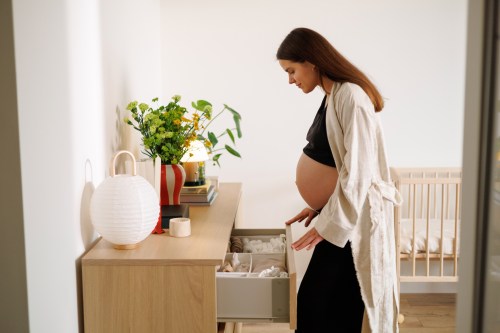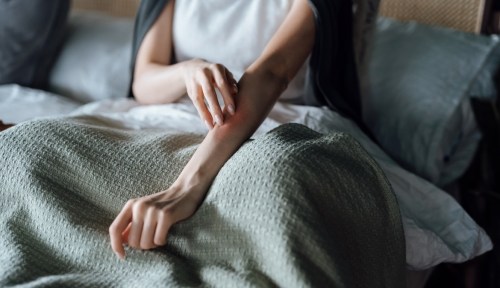An overactive bladder may seem like a never-ending cycle of bathroom-related emotions. The sudden urge to pee or the risk of urinary incontinence (accidentally releasing urine) can cause major tension, anxiousness, isolation, and stress. So if you’re grappling with the emotional aspects of peeing a lot, know that you’re not alone. Research suggests that almost 50 percent of people with an overactive bladder experience anxiety symptoms, too.
Experts in This Article
Angela Fishman, PT, is the owner of My Pelvic Floor Therapy.
Kristin Longshore, ANP-BC, is a board-certified nurse practitioner at Austin Urogynecology.
Rachel Gelman, PT, DPT, is the owner of Pelvic Wellness and Physical Therapy.
Before we go into some of the overlooked stress-related factors of overactive bladders, let’s discuss what “peeing a lot” involves. Under normal circumstances, you’re likely peeing once every two to four hours during the day, says Rachel Gelman, PT, DPT, owner of Pelvic Wellness and Physical Therapy. Additionally, your peeing time can provide some insight. For the uninitiated, the average person should be peeing for around 20-seconds if their bladder is sufficiently full. If you’re peeing for less time or more, it can mean that you’re going to the bathroom a bit too frequently or not frequently enough. Many factors can impact your bladder: things like the amount of physical activity you’re doing, your overall fluid intake, and even the climate can impact how frequently you need to go, says the Cleveland Clinic.
“But here’s the thing you should keep in mind when you think about your bladder: anxiety, stress, and anything of the sort can contribute to bladder urges, too,” says Jenn Lormand, exercise physiologist and owner of Ascension Fitness.
Muscles and nerves work with your brain to tell your bladder when to release and hold urine, according to Johns Hopkins Medicine. So “Anxiety and stress can contribute to frequent urination. This is partly because muscles around the bladder may tense up, which can make the brain think it’s time to pee,” says Gelman. Additionally, a 2015 study published in Urology aimed to explore the relationship between urinary incontinence and depression and anxiety. The researchers found that of the 16,263 women surveyed over ten years, those with depression and anxiety were 50 percent more likely to develop urinary incontinence.
There’s no clear reason why anxiousness, stress, and bladder issues are linked. But there are distinct overactive bladder emotions involved—even if you’re not dealing with anxiety. For instance, nervously shuffling off to the nearest restroom every time you have the urge to pee, you’re training your brain to pee more frequently. So when thinking through managing an overactive bladder, keep calming strategies in mind.
So if you’re someone who has a frequent urge to pee (and doesn’t always have a full bladder), then bladder training involves working with your provider to assess how frequently you pee. From there, you will follow a bathroom schedule and gradually increase the intervals between your bathroom breaks (typically by one minute each week). Essentially, over several weeks, you work with your brain to train yourself to hold and release pee at more appropriate times. But, as you can imagine, calming strategies and stress-reduction techniques will be instrumental.
Techniques to help with an overactive bladder
Consider Kegels
“A ‘Kegel’ is another name for doing a pelvic floor muscle contraction,” says Angela Fishman, PT, owner of My Pelvic Therapy. “Kegels are often prescribed/recommended for strengthening the pelvic floor muscles.” Strengthening the pelvic floor muscles might help stop your bladder’s involuntary contractions, the Mayo Clinic says. You can work up to holding the contraction for 5 seconds and then 10 seconds at a time. Try doing three sets of 10 repetitions each day, the Mayo Clinic says.
Additionally, Fishman says that doing them when you’ve used the restroom and you’d like to hold your pee a little longer can help send a message to the brain that it’s not quite time to go yet, which, over time, can relieve some of the emotional distress. There’s also some evidence that doing Kegels can have impacts on your overall stress and anxiety too. You can learn how to do a Kegel by chatting with your provider about the best technique.
Try small yoga exercises
Kristin Longshore, ANP-BC, a board-certified nurse practitioner at Austin Urogynecology, says to try other exercises besides Kegels. “Often engaging and exercising the core will help strengthen the pelvic floor. Yoga poses like bird dog, plank, and a side-lying leg lift will engage the core/pelvic floor and, in turn, help to strengthen these areas.
Practice diaphragmatic breathing
If you’re dealing with the urge to go, and you’re trying to wait a bit, diaphragmatic breathwork might help. Why? Well, this induces your parasympathetic nervous system (or your rest and digest system), which can help when anxiousness strikes, but more than that, diaphragmatic breathing helps engage and strengthen your core, which might positively impact your bladder control overall. You start by breathing in deep for a count of four, Lormand says. “Try to expand the ribcage to the front, sides, and back (inflating the ribcage like a giant balloon),” Lormand says. “Then gently exhale, for a count of eight,” she explains.
Oh hi! You look like someone who loves free workouts, discounts for cutting-edge wellness brands, and exclusive Well+Good content. Sign up for Well+, our online community of wellness insiders, and unlock your rewards instantly.
Sign Up for Our Daily Newsletter
Get all the latest in wellness, trends, food, fitness, beauty, and more delivered right to your inbox.
Got it, you've been added to our email list.











